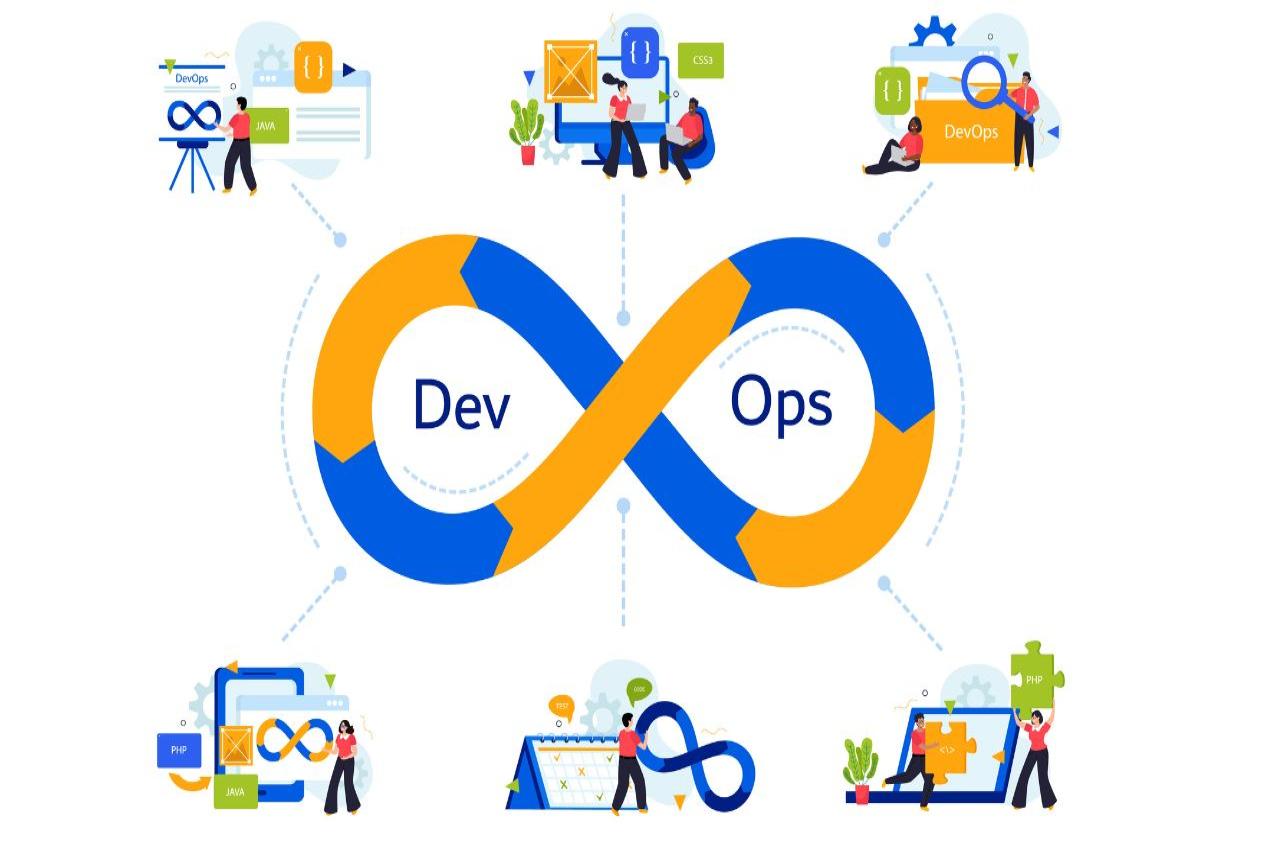In the fast-paced realm of software development, agility, and efficiency are not just buzzwords; they are the driving forces behind successful projects and thriving businesses. Enter DevOps – a cultural and operational paradigm that seeks to break down silos, foster collaboration, and automate processes to deliver high-quality software at speed. In this comprehensive guide, we embark on a journey into the heart of DevOps, exploring its foundations, key principles, benefits, and the crucial tools that make it all possible. Whether you're a seasoned developer, an operations specialist, or simply curious about the buzz surrounding DevOps, let's unravel the intricacies and demystify DevOps 101.
Understanding DevOps: Beyond Development and Operations
At its core, DevOps is not just a set of tools; it's a cultural shift that aims to bridge the gap between development and operations teams. Traditionally, these teams operated in isolation, often resulting in friction, delayed releases, and a lack of collaboration. DevOps seeks to foster a collaborative and iterative approach, where development, testing, deployment, and operations are seamlessly integrated into a continuous cycle.
Key Principles of DevOps
1. Collaboration and Communication:
DevOps emphasizes breaking down silos and promoting collaboration between development, operations, and other stakeholders. Effective communication ensures that everyone is on the same page, working towards common goals.
2. Automation:
Automation is a linchpin of DevOps. By automating repetitive tasks, such as testing, deployment, and infrastructure provisioning, teams can achieve efficiency, consistency, and a faster time-to-market.
3. Continuous Integration and Continuous Deployment (CI/CD):
CI/CD pipelines are the backbone of DevOps. Continuous Integration involves regularly merging code changes into a shared repository, while Continuous Deployment automates the process of deploying code changes into production.
4. Infrastructure as Code (IaC):
IaC involves managing and provisioning infrastructure through code, enabling the automation of infrastructure tasks. This ensures consistency, reduces manual errors, and facilitates scalability.
5. Monitoring and Feedback:
DevOps places a strong emphasis on real-time monitoring and feedback loops. Continuous monitoring allows teams to detect issues early, gather insights, and iterate on improvements.
Benefits of Embracing DevOps
1. Faster Time-to-Market:
DevOps accelerates the software development lifecycle, enabling rapid releases and reducing time-to-market. This agility is crucial in competitive industries where staying ahead is paramount.
2. Improved Collaboration:
By breaking down silos and fostering collaboration, DevOps promotes a culture of shared responsibility. Developers and operations teams collaborate seamlessly, leading to a more streamlined workflow.
3. Enhanced Quality:
Automation of testing and deployment processes ensures consistency and reduces the likelihood of errors. This results in higher-quality software that meets user expectations.
4. Increased Efficiency and Cost Savings:
Automation and efficient collaboration translate to reduced manual effort, lower operational costs, and optimal resource utilization. DevOps is not just about speed but also about resource efficiency.
5. Adaptability and Scalability:
DevOps practices are designed to be adaptable to different project sizes and types. Whether it's a small startup or a large enterprise, DevOps principles can scale to meet the unique needs of each.
DevOps Tools: The Building Blocks of Efficiency
1. Version Control Systems:
Tools like Git enable version control, allowing multiple developers to collaborate on projects simultaneously without conflicts.
2. Continuous Integration/Continuous Deployment (CI/CD) Tools:
Jenkins, Travis CI, and GitLab CI are examples of CI/CD tools that automate the build, test, and deployment processes.
3. Configuration Management Tools:
Puppet, Chef, and Ansible automate the provisioning and configuration of infrastructure, ensuring consistency across environments.
4. Containerization and Orchestration:
Docker provides containerization, while Kubernetes handles container orchestration, allowing for scalable and portable deployments.
5. Monitoring and Logging Tools:
Prometheus, ELK Stack (Elasticsearch, Logstash, Kibana), and Splunk assist in real-time monitoring, log analysis, and performance tracking.
DevOps in Action: Real-World Examples
1. Netflix:
Netflix embraced DevOps to manage its vast streaming platform. Continuous deployment and automated testing allow Netflix to roll out updates seamlessly, ensuring a smooth user experience.
2. Etsy:
Etsy, the e-commerce platform, attributes its success to DevOps practices. Continuous deployment enables Etsy to release code changes multiple times a day, responding quickly to market demands.
3. Amazon:
Amazon's transformation into a cloud computing giant, with Amazon Web Services (AWS), is a testament to the scalability and efficiency achieved through DevOps practices.
Challenges and Best Practices in DevOps Implementation
Challenges:
-
Resistance to Change: Introducing a DevOps culture may face resistance from teams accustomed to traditional workflows.
-
Tool Overload: The abundance of DevOps tools can be overwhelming. Selecting the right tools that align with organizational goals is crucial.
-
Cultural Shift: Achieving a cultural shift towards collaboration and shared responsibility requires time and commitment.
Best Practices:
-
Start Small, Iterate: Begin with a pilot project to introduce DevOps practices gradually, gathering feedback and making iterative improvements.
-
Focus on Culture: DevOps is as much about culture as it is about tools. Foster a collaborative and open culture that values continuous improvement.
-
Automate Thoughtfully: Identify repetitive and time-consuming tasks for automation, but ensure thoughtful implementation to avoid unnecessary complexity.
The Future of DevOps: Continuous Evolution
As technology evolves, so does DevOps. The future promises further integration of artificial intelligence (AI) and machine learning (ML) into DevOps processes, enhancing predictive analytics, anomaly detection, and automation. The principles of DevOps will continue to underpin the transformation of software development and IT operations, shaping the way organizations deliver value to their users.
Conclusion: Embracing the DevOps Mindset
In conclusion, DevOps is not just a set of practices; it's a mindset that cultivates collaboration, automation, and continuous improvement. Whether you're a developer, an operations specialist, or a leader steering an organization towards digital excellence, embracing the DevOps mindset can unlock new possibilities. DevOps is not a destination; it's a journey of perpetual enhancement, where teams collaboratively pave the way for innovation, efficiency, and a future where software delivery aligns seamlessly with business objectives. As we navigate the ever-evolving landscape of technology, the DevOps journey stands as a beacon, guiding us towards a culture of agility, resilience, and continuous evolution.




